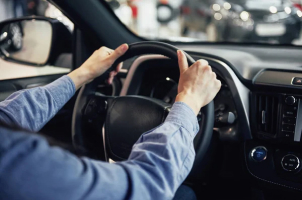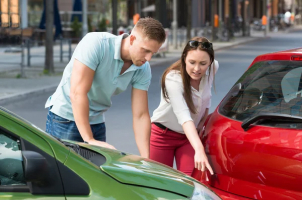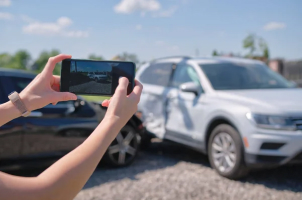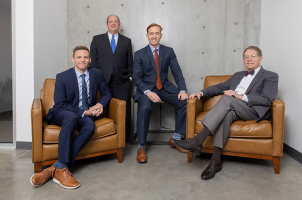
Motor vehicle crashes account for thousands of injuries and fatalities every year. Determining fault in a car crash or other car accident is important for the parties involved and the loved ones of deceased victims. How is fault decided in an auto accident? Many people likely do not know who determines who is responsible for a motor vehicle crash.
Table of Contents
The method of determining fault in a car accident may be a complex process and involve multiple parties. It may become more difficult in some situations, such as in a crash involving multiple vehicles after several vehicles rear-ended each other on a busy highway.

Your insurance company will not want you to admit fault when an accident occurs, even if you may think that you have some responsibility for the accident. Yet, some drivers say they have some fault for the accident at the scene. If you find yourself in a vehicular crash and the other driver admits fault, make sure that you report their statements to your insurance company when making the police report.
Car insurance companies are notorious for sometimes raising rates after a car accident, so you want to do everything to protect yourself, especially if you are the party involved who is not at fault or only minimally responsible for the wreck. The Utah State Legislature states the requirements for accident reporting responsibilities.
Police reports often have a role in determining who is responsible in an auto accident and whether only one driver is to blame or whether more than one of the drivers involved is partially at fault for the crash.
Make sure you try to calmly state what happened when you speak to a police officer and provide as many details as you can remember about the accident. It is normal to exhibit emotions such as stress, even if you do not have visible injuries, after a motor vehicle accident. You must state the facts rather than acting irrationally after the crash.
Provide the responding officer with your driver’s license, current address, and contact information. Explain what happened, especially if you witnessed the other driver violate any traffic law, such as speeding, running a red light, or blazing through a stop sign.
If you were on a freeway, did the other driver cut you off, or was the driver swerving as if they were under the influence? Did you smell alcohol on any other drivers after the accident? Ensure you state all the facts you can remember to the responding law enforcement officer.
The report will state what the evidence appears to show and will include observations made by law enforcement and will also take into account any statements made by drivers involved and witnesses.

Insurance companies of all the parties will try to have input on who is the at-fault party or parties in a car crash. It is crucial not to engage in conversations with anyone at the other driver’s insurance company. They may use your statements against you. Refer them to your experienced attorney at the office of the award-winning Parker + McConkie lawyers.
Insurance companies have simplified the process for people to file claims, even by offering the opportunity to submit photos or other documentation to file virtual car insurance claims with their own insurance company. It is critical to follow through with a phone call to ensure that your insurer receives all the information you submit online.
Insurance companies for the parties try to decide the outcome. If your insurer decides that the other driver is at fault, they will seek restitution. Your lawyer will initiate a demand to the insurance company representing the driver at fault to pay you for your injuries and damages. The parties will start the process of trying to settle the case.

The laws in the various states sometimes differ, so how fault is determined depends on the laws of the state where the accident takes place and the details of each particular vehicle accident.
Every driver is responsible for exhibiting a duty of care and caution with respect to other drivers on the road, pedestrians, bicyclists, and operators of other vehicles operating safely on roadways. Any driver who fails to exercise the required duty of care is more likely to be found to have exhibited negligence when there is a car accident.
A vehicle operator who did not exercise the same degree or amount of care that a “reasonable person” would have exercised may be determined to be responsible for a car accident.
Some states have contributory negligence laws, sometimes referred to as “pure negligence.” These six states include Alabama, Virginia, North Carolina, South Dakota, Maryland, and the District of Columbia.
Suppose you have an auto accident in those states and are found to have any fault. In that case, you may not be entitled to receive indemnity from the other party’s insurance company, even if, for example, the at-fault party is found to be 95% at fault, and you only bear five percent of the fault.
States that use the comparative negligence model for fault in an auto accident allow the injured party to recover compensation based on the degree of fault of the other driver. If the other party is determined to be 75% at fault, you would likely receive 75% compensation for your medical bills, lost wages, and other damages. Your insurance company, or you, would be responsible for the remaining 25% of the damages.
Many states, including Utah, Wyoming, and Idaho, have modified comparative negligence laws. That means you may recover compensation for your injuries and losses if you are less than 50% accountable for a car accident. Speak to a skilled Parker + McConkie attorney to learn more about the laws.
A driver who violates a traffic law may have to defend themselves against a presumption of negligence. One example is found in Utah 41-6a-711 – Following another vehicle – Safe distance – Exceptions – Penalty. The law states, in part, that “The operator of a vehicle: (a) may not follow another vehicle more closely than is reasonable and prudent, having regard for the: (i) speed of the vehicles; (ii) traffic upon the highway; and (iii) condition of the highway.”
If another driver rear-ends you while you are stopped in heavy traffic on the highway or when at a traffic light, that driver will have to present evidence proving that they were not negligent in the car accident.

The evidence that you have in your car accident claim is crucial to winning the claim. The accident report, any statements the other person made admitting fault in an accident you were involved in, and collecting evidence beyond the basics can potentially help you prove that someone else is responsible for the car accident.
Property damage to your car is a major factor in determining fault, whether there are just two cars or a pileup involving multiple vehicles. The vehicle damage may be assessed by police officers or other law enforcement agencies responding to the accident. Your insurance company and the other driver’s insurer may assess the damage to determine who is legally responsible.
Did you have damage to other property? Make sure that you let your personal injury lawyer know about damage to work equipment or personal belongings damaged or destroyed because of the negligence of the at-fault driver involved in the accident. Take pictures of property damage or have someone do it for you if you have injuries.
Your injuries or the injuries of a loved one are likely to serve as evidence when you are involved in a car accident. Take photos of all your injuries. Have someone check your back or other areas you cannot see for signs of injuries.
Do not presume that you do not have injuries if you do not see gaping wounds or lose consciousness. What seems like a few bumps and bruises could really be signs of blood clots or a concussion. You could have broken bones, brain injuries, internal bleeding, spine injuries, or other internal injuries. Always go to the emergency room whenever you are in a car accident.
Did a loved one lose their life because of the other person’s fault for the accident? Get reports from the hospital and attending medics that document their injuries.
Few businesses have cameras installed to monitor their buildings and parking lots today. Many cities and states have cameras that monitor streets for traffic violators. These cameras are likely to offer considerable benefit to proving your claim for damages from the person at fault for the accident.
Your attorney will likely check the area to determine if cameras may have caught the accident, which may bolster your claim.
Forensic analysis sometimes speaks for the victims who no longer can speak for themselves. Specialists in various areas of forensics may examine the vehicles involved in a car accident, especially if there were fatalities.
Some other areas where forensic analysis is likely to help are measuring skid marks, looking for paint on the other car or on guardrails, or examining other objects that can help determine fault.
Your car insurance company and an attorney can get the forensic analysis report.
States vary in their statute of limitations for car accidents. The statute of limitations in Utah, for example, is four years. It is two years in Idaho and four years in Wyoming.

The experienced, compassionate car accident attorneys at Parker + McConkie understand the devastation that a car accident can have on you and your loved ones. You need an attorney who will protect your rights and who will strive to get the best possible resolution for your claim.
We are known as award-winning attorneys who get results for clients.
Contact us today for a free initial consultation.



